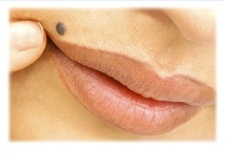Common Question and Answers
What causes moles?
- Some people are born with moles. Other moles appear over time.
- Sun exposure seems to play a role in the development of moles and may even play a role in the development of atypical, or dysplastic, moles.
- The role of heredity cannot be underemphasized. Many families have a type of mole known as dysplastic (atypical), which can be associated with a higher frequency of melanoma or skin cancer.
What method of lesion removal we use
Radio frequency device for the effective treatment of a wide range of common minor skin irregularities without penetrating the skin’s surface. You can actually enquiry if you like to obtain the device for your practice
What happens After lesion removal treatment
A small wound will be present after treatment. In most cases it does not even require a dressing. This usually heals within a week.
The treated area will be sensitive to the sun for some months and you should use a sunscreen of SPF 30 for about 6 months.
Melanoma Prevention
Be aware of your body and any moles that have changed over time. This is especially true for moles that are dark or flat. Invariably, people will see doctors and be extremely concerned about raised, lightly colored moles, but they are not concerned about the dark, black melanoma (skin cancer) next to the mole. This is truly important.
Additionally, it is imperative to stay out of the sun and wear sunscreen when you are outside. If you do go to your dermatologist for evaluation, be receptive to a full body mole screening because it is important to look over your entire body rather than ignore areas that you may not be able to inspect regularly.
Is rosacea contagious?
No. Rosacea is not considered an infectious disease, and there is no evidence that it can be spread by contact with the skin or through inhaling airborne bacteria.




